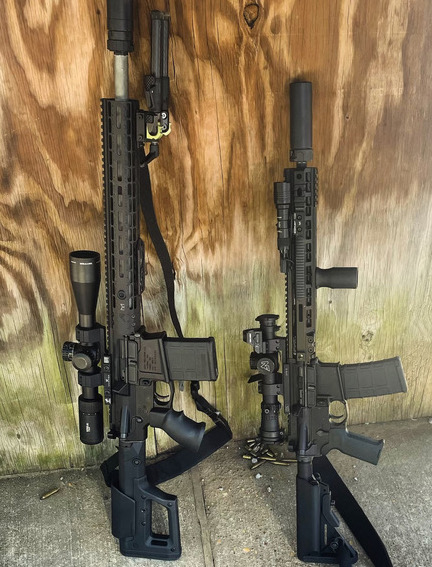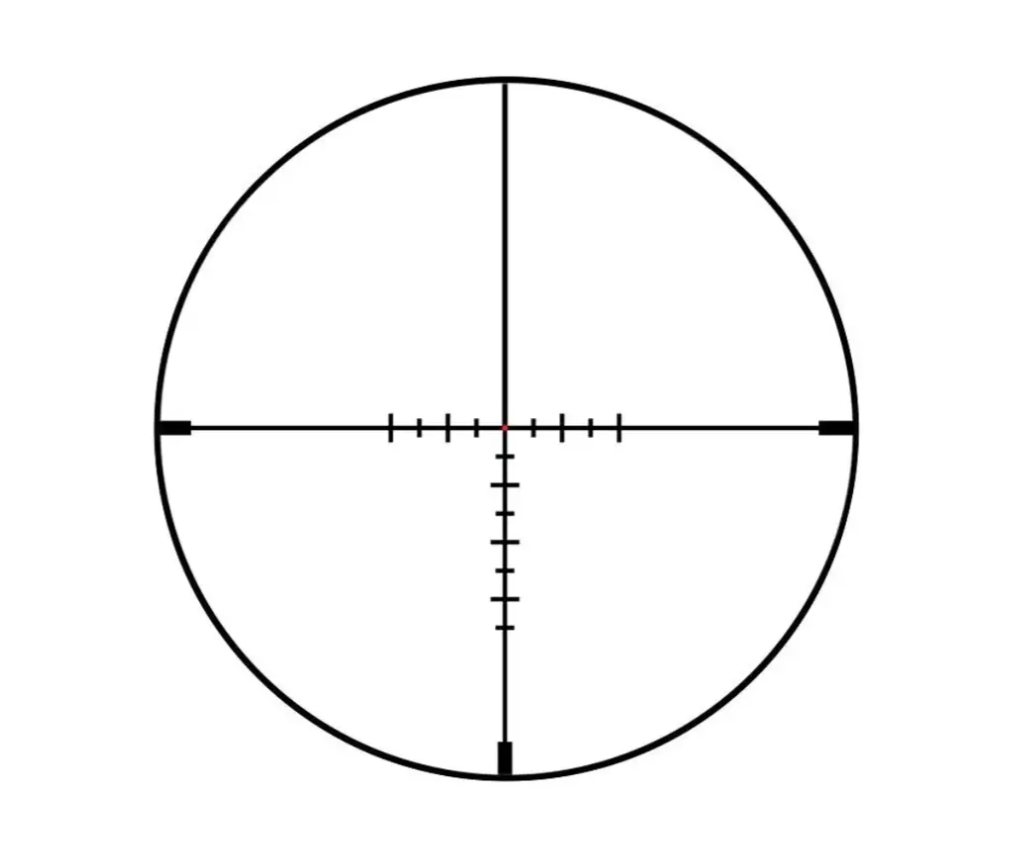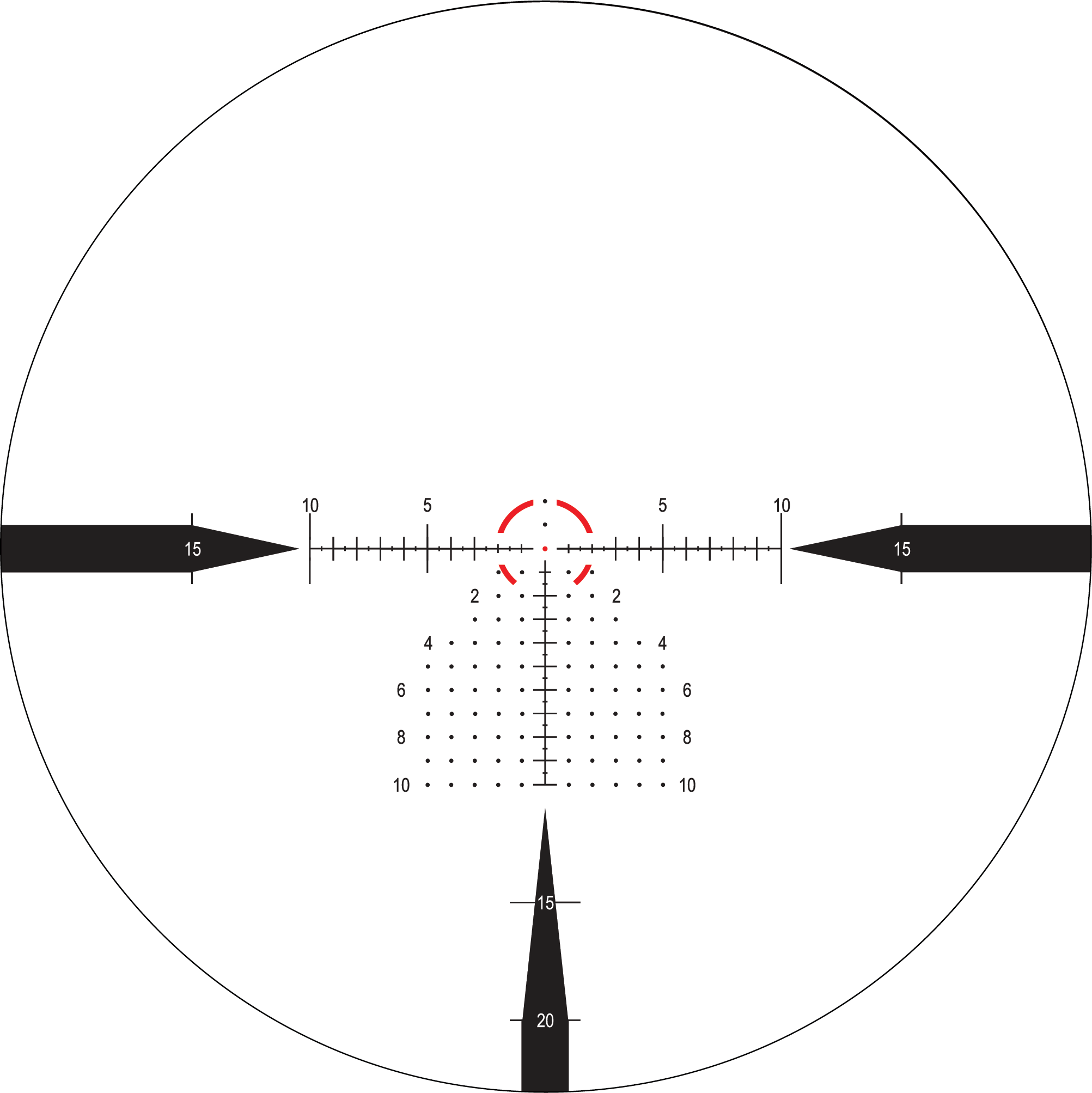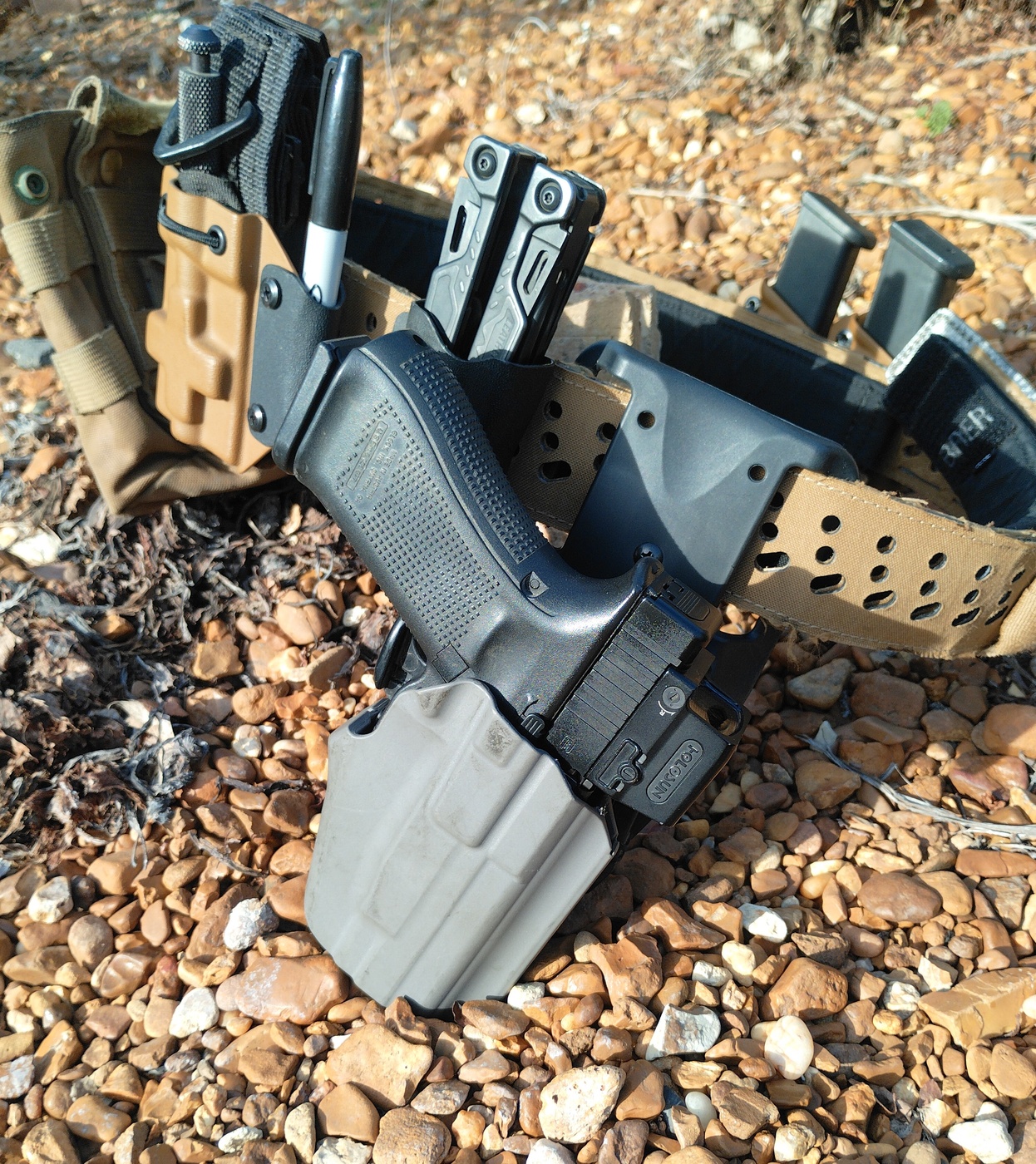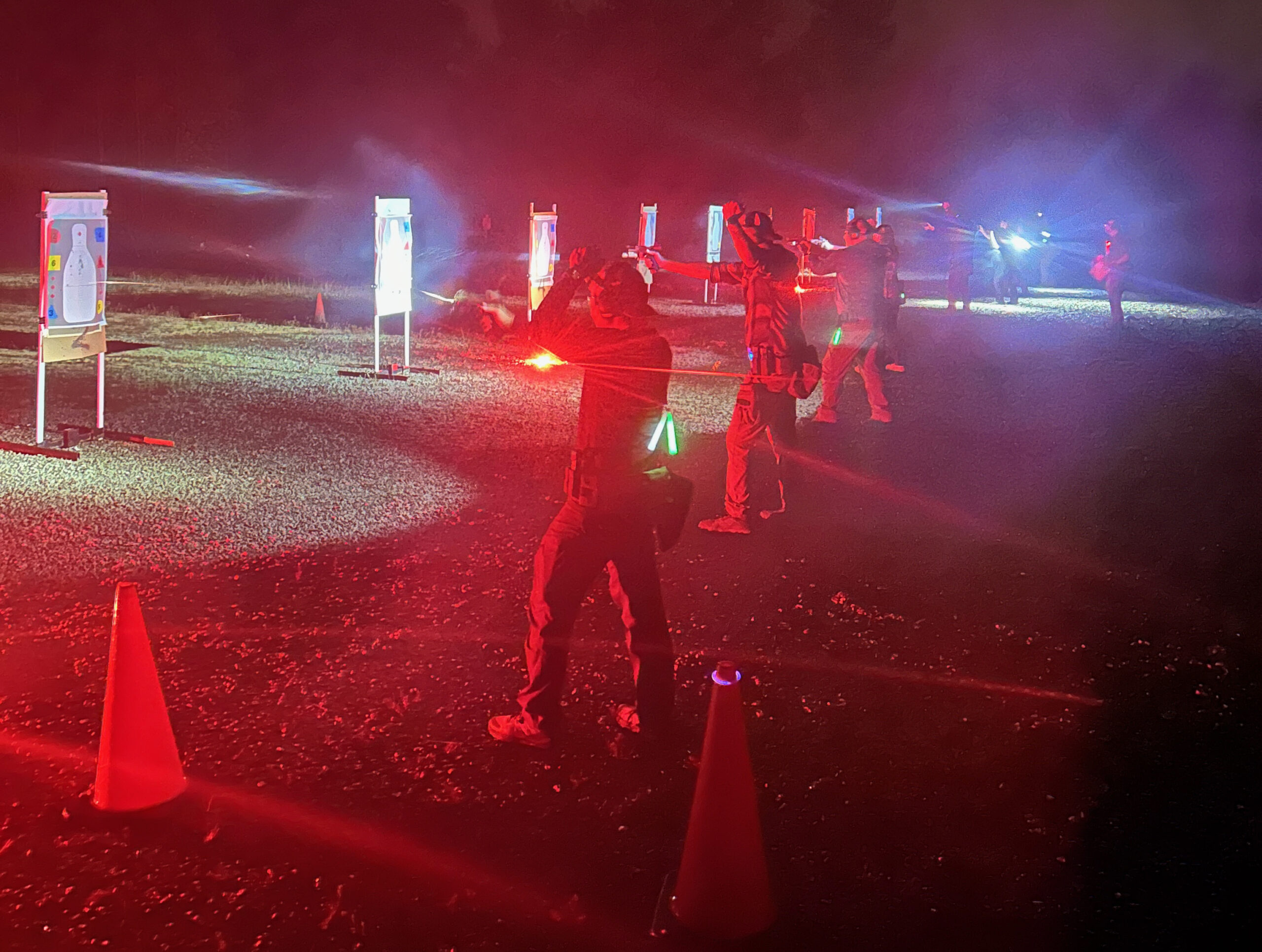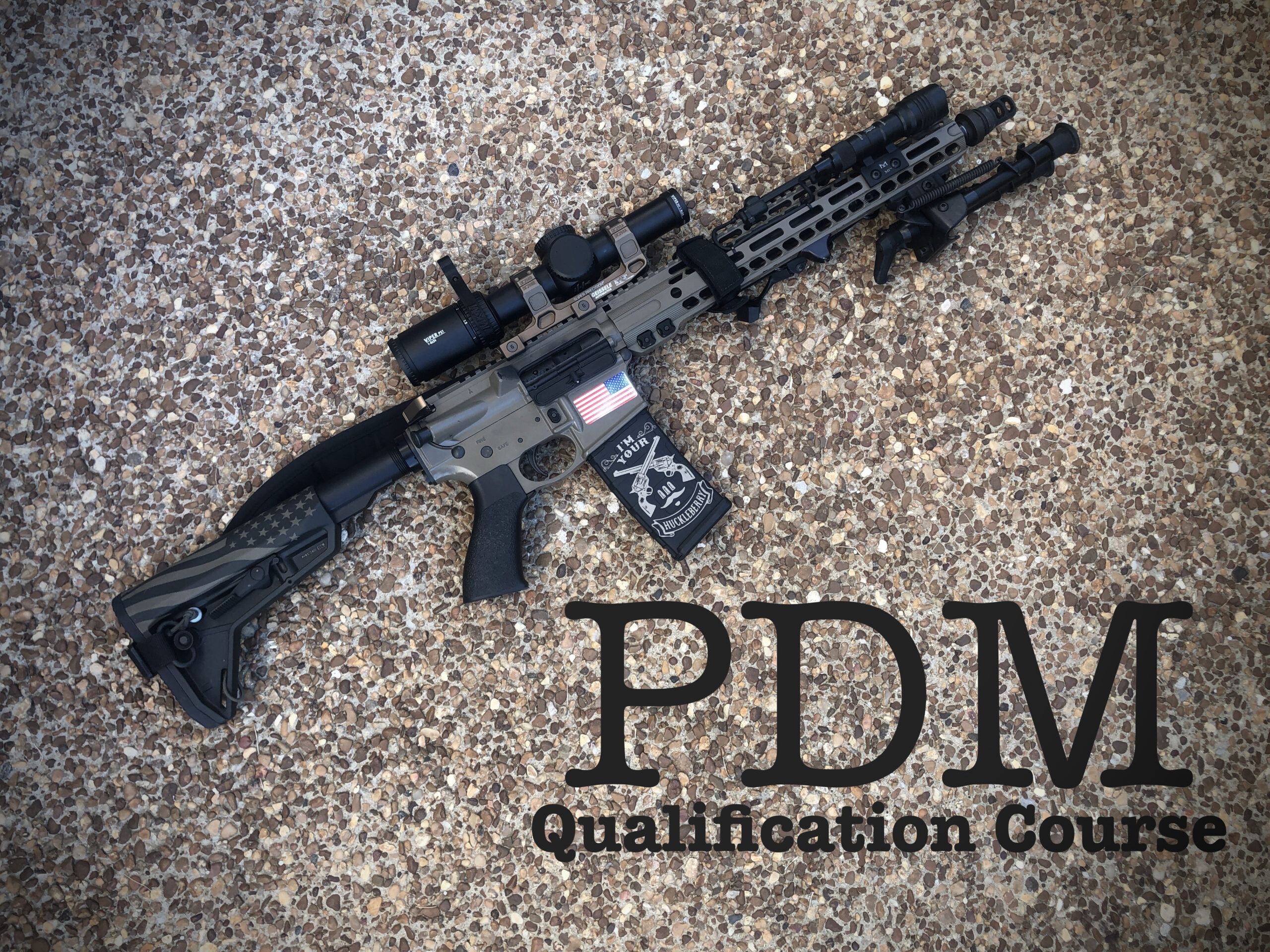Terminology: GPR vs DMR
by Randy Davis
One topic which generates a lot of discussions is the differences between a General Purpose Rifle (GPR) and a Designated Marksman Rifle (DMR). There is a lot of crossover between the two setups so in some ways they appear very similar. The differences lie in the nuances of the components used in each system. Before you can optimize the system, understanding the intended capabilities is necessary. In this article we will detail the components of both setups and provide information to help shooters optimize each platform for its intended mission.
GPR
The implied uses of the GPR include both CQB and mid-range shooting. The components selected must provide capability in both areas while simultaneously minimizing sacrifices in both areas as well. Considerations of weight, reticle design, and setup of accessories determine the ability of the GPR to fill the many roles it is tasked to support. Common GPR optics include LPVOs, prisms, and red dots with magnifiers. The optic selection is usually determined by the expected top end distance engagements balanced against the CQB capabilities needed. The length of the weapon system should also be considered, especially if a suppressor will be used on the rifle. A good example of a GPR was the SOPMOD Block 2 M-4 and later the URGI. Many of these rifles were equipped with either the Vortex Razor 1-6x or various Sig Sauer LPVOs. These weapon systems performed extremely well as GPRs in real world deployments. .
DMR
In contrast, the DMR is a purpose-built rifle for mid to long range shooting. While still capable of CQB, little consideration is given to optimizing the rifle for this task. The addition of bipods, technical reticle designs, specialized stocks/grips, and longer barrel lengths optimize this rifle to its intended task. A good example of this rifle setup is the MK12 SPR. This setup also allows shooters to get the most out of different calibers such as 6mm ARC, 6.5 Creedmoor, and .308. Common optic types for DMRs include LPVOs and MPVOs, normally in at least 8x power for top end magnification. Finally, an offset red dot can greatly enhance the close range capability of this setup, but requires additional training.
Questions to ask
Here is a list of questions I use when I am determining the setup of a rifle:
What is the primary application for the rifle?
What level of precision is desired?
What level of CQB use is required?
What are my optimal terminal effects?
What barrel length is needed to achieve desired velocity?
Is the weapon system going to be suppressed?
Optics
While both setups routinely use an LPVO as the primary optic, optimizing the reticle for the intended task greatly enhances the usefulness of the rifle. A simple second focal plane reticle such as the Vortex VMR-2 (pictured above) with the daylight bright center dot excels in the CQB role and allows for some capability at longer ranges. A more complex reticle, such as the first focal plane Nightforce DMX (also pictured above), is a great long range reticle which maintains usefulness for CQB when powered down to 1x. Neither reticle is superior to the other. They are designed for different primary tasks. The end user understanding the primary function of their rifle is critical to determining which type of optic is optimal for their set up.
First vs Second Focal Plane
In a first focal plane (FFP) optic, the reticle and image size change when the magnification is adjusted. In a second focal plane (SFP) optic, the reticle stays the same size and only the image changes size when the magnification is adjusted.
The FFP optic has an advantage where the measurements of the reticle are always true. This means “a mil is always a mil” no matter what power the optic is set on. This is an advantage when using holds for elevation, when compensating for wind, and when engaging long-range moving targets. The disadvantage of FFP is the relatively small size of the reticle at 1x power. This effect causes significant reduction in clutter at 1x power but can be detrimental for CQB.
The SFP optic has an advantage where the reticle is usable at every power level. This can make shooting CQB much easier. The reticle designs on SFP optics are generally more simple which helps to reduce clutter in the sight picture. When the scope is adjusted to maximum power the measurements of the reticle will be true. The drawback of the SFP optic is shooting distance at any other magnification level, because the reticle measurements do not hold true.
Barrel Length
As a rule, most GPRs have a barrel length between 12.5” and 16” and most DMRs have a barrel length between 16” and 20”. Of course there are always exceptions to rules, for example, the Zero Theory LE-DMR has a barrel of only 11.5”. Even so, it is extremely accurate and routinely achieves groups under ½ MOA. This is possible because, in part, the length of the barrel has no effect on accuracy. It does, however, have a great effect on velocity. The LE-DMR suffers from the same lack of velocity any 11.5” barrel will experience. Velocity greatly influences trajectory and terminal ballistic effects of the 5.56 round. If the rifle is intended for duty or self- defense use, the velocity needed for optimal terminal effects at the distance the weapon will be employed must be considered. The specific ammo selected will need to be considered as well.
Attachments
Attachments on a rifle are very subjective; what one person loves another person may hate. If you look at all of the Zero Theory staff’s rifles you will see very different configurations. The key is finding what works for your body type and shooting style. That being said, I will share how I outfit my rifles.
I generally set up a GPR very similarly to a CQB rifle. I use a stubby vertical grip and have my light/laser controls in the same positions as my CQB rifle. This is because I generally treat the GPR as a CQB rifle which happens to have additional long-range capability. The weight of the weapon system matters more to me with a GPR, because I am able to run lighter rifles faster at closer range.
My DMR setup is very different from the GPR. I don’t run any type of vertical grip or hand stop to eliminate interference with barricades. I use an ARCA rail on a couple DMRs for mounting a tripod. I generally attach a QD bipod since the rifle is optimized for long-range accuracy and not CQB. This is not to say you can’t do CQB with a DMR; it is just not optimized for it. The weight of the rifle is less of a concern. I obviously don’t want it uncomfortably heavy if I need to carry it for extended distances, but I do appreciate a bit more weight than a GPR. The added weight increases stability, especially when shooting from an alternate position.
Irrespective of what type of rifle you are setting up, try to ensure the balance point is at the front of the magwell. A balanced rifle is easier to shoot at short and long range. It greatly reduces shooter fatigue. It makes target transitions faster by reducing over-swing and helping shooters drive more quickly between targets. It makes changing positions faster and improves accuracy during off-hand shooting. No matter the setup and application make sure to check the balance of the rifle.
I hope this article helps to clarify some differences between GPRs and DMRs. As with anything in the field of weapons and shooting, the best option depends on the mission. Optimizing your setup for your intended purpose will prevent the square-peg-round-hole effect. Training is the best way to determine what gear and weapon setups work for you. As a bonus, actual skill is obtained when receiving quality training. Remember, you can’t hardware a software problem.
About the author: Randy Davis is a sniper instructor and sniper team leader on a law enforcement SWAT team. He previously served in various tactical and precision shooting roles in both the US Army and as a private contractor. Some of his hair is gray, but he’s mostly earned it.
Like this? Check out our other articles…
[020] Gun Belt Setup
Gun Belt Setup by Joe Rhoades Let’s discuss [...]
[019] Pistol Training for Low-Light Conditions
Pistol Training for Low-Light Conditions: Considerations for Law Enforcement [...]
[018] Patrol Designated Marksman Qualification Course
by Zero Theory staff In law enforcement, designated marksmen can [...]

